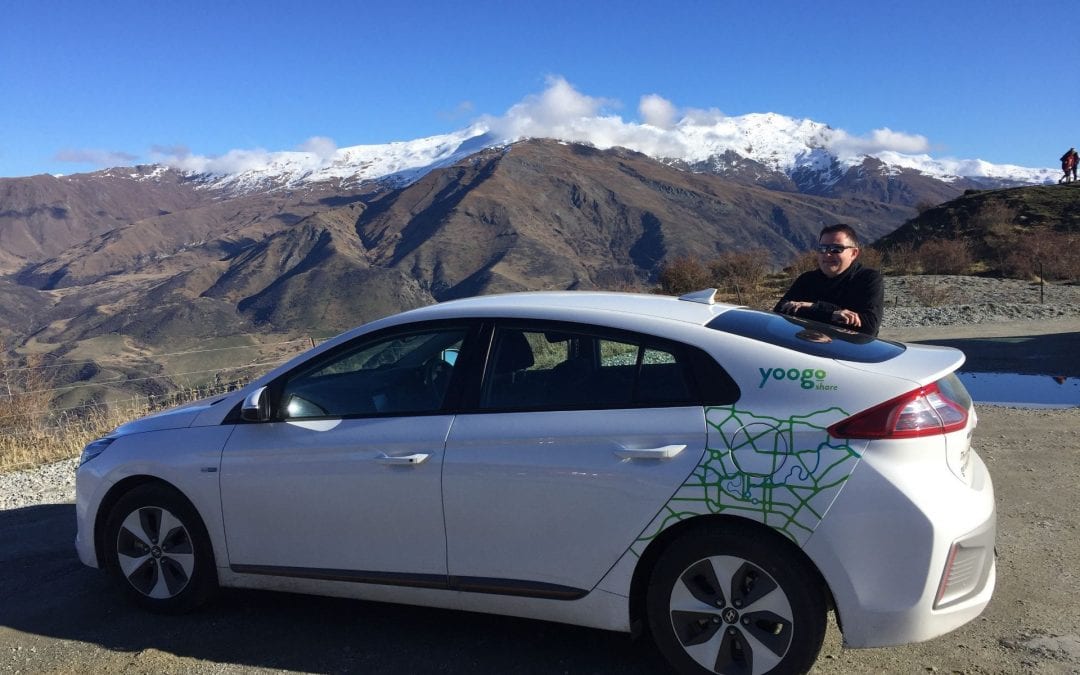As many of you will be aware, our director Shaun Hendy has been travelling a lot differently this year. Despite being a frequent domestic and international traveller, Shaun decided that for 2018 he would set an example and highlight his concern about climate change by not using air travel for the entire calendar year. The hashtag #nofly2018 was born and, from the first day in January, he has walked the talk – effectively turning his back on flying as a means to get around, favouring instead modes of land transport that emit less carbon.
Various news outlets have covered Shaun’s journey over the year, including Radio New Zealand and the New Zealand Herald. So, now that we’re into September, how is he getting on? Well, very impressively according to the stats. By mid-September 2017, Shaun had made 10 return flights from Auckland to Wellington, at a cost of 2.66 metric tonnes of CO2 (equivalent)*. So far this year he has been to Wellington and back six times (once by car, three times by train, and twice by bus) at a cost of just 0.458 metric tonnes of CO2 (equivalent)*. What is more he’s got more done in Wellington this year: in 2017 his 10 flights gave him 10 business days in Wellington, while in 2018 he has had 21 working days down the capital.
Not flying has its advantages
In addition to reducing his carbon footprint, Shaun says one of the great advantages to taking it slower by road or rail is that you can actually get a lot of work done on the way and plan in more meetings with investigators in one trip. Te Pūnaha Matatini, a national Centre of Research Excellence, has investigators spread across New Zealand.
“Over the last two weeks [for example] I have travelled #nofly2018 style from Auckland to Queenstown and back again,” said Shaun. “It was great to catch up with a number of investigators on the way through. I spent a beautiful sunny day at the University of Canterbury, catching up with [Te Pūnaha Matatini investigators] Alex James, Jeanette McLeod, Mike Plank, and Audrey Lustig, as well as dropping by to see Rebecca Turner at Scion. The conversations that day were very timely as I have gotten involved with MPI’s Mycoplasma Bovis Eradication Science Advisory Group to help them think about how they can use the various data sets they have at their disposal.”
Electric vehicles becoming more feasible
On his most recent trip, Shaun was also sponsored by Yoogo Share, an electric vehicle share company that has 100 electric vehicles based in eight locations in Christchurch.
“They lent me one of their Hyundai IONIQ’s for five days,” said Shaun. “I had about 1,000km to drive, including the odd hill or two. The IONIQ doesn’t yet have the range of a petrol vehicle. Depending on the terrain, you’ll get around 100-160 km between charges, although running the heater will shave 10-15% off this. A fast charge takes around 15 minutes and will boost your battery up to about 80% capacity, but if you’ve got another 10 minutes or so you can charge it up to 95%.”
Luckily, there is a growing network of charging stations across New Zealand, which means electric vehicle users can get to most places without too much trouble.
“From Christchurch, I charged up at Geraldine, then Tekapo, followed by a big charge at Twizel to make sure I made it over the Lindis pass, and then a final top up in Cromwell,” said Shaun. “The IONIQ was great to drive – I had no problems taking it up over the Crown Range Rd. Definitely give it a go next time you are in Christchurch.”
Follow Shaun on Twitter for #nofly2018 updates!
Keep up-to-date with Shaun Hendy’s travels on Twitter by following the #nofly2018 hashtag.
Heading back to Christchurch today in the @yoogo_nz Hyundai IONIQ. It’s been a great climate-friendly few days #nofly2018 pic.twitter.com/sleS3kUEBI
— Shaun Hendy (@hendysh) August 19, 2018
*Calculated using the Enrivo-Mark Travel Emissions Calculator.

